Vimar Lighting transformers, ballasts
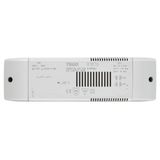

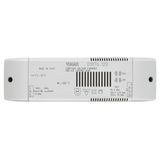

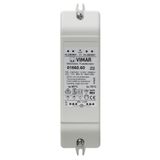
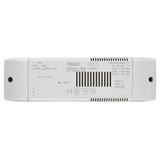
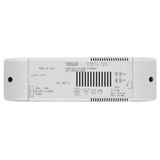

vimar lighting transformers portfolio map and selection rules
This family spans magnetic and electronic supplies for legacy lamps and auxiliaries, plus SELV units for controls. Input 220–240 V AC, 50/60 Hz; protection classes I/II; surge immunity typically 2 kV (line–line) and 4 kV (line–earth). Labelled tc points, ambient ranges (−20…+50/60 °C), and wiring windows 0.5…2.5 mm² make sizing predictable. Use vimar lighting transformers when you need isolation for SELV circuits, low leakage on metalwork, and form factors that actually fit the canopy depth on drawings.
vimar electronic ballasts fluorescent control and EMC discipline
High-frequency HF gear for T5/T8 and compact fluorescent stabilizes arcs at 30–50 kHz, lifts efficacy, and removes flicker. Common features: PF ≥ 0.95, THD < 10–15 %, EOL cut-off, warm start to protect cathodes, and Class A noise. Compliance: EN/IEC 61347-2-3, 61347-1, and EMC to EN 55015/61000 series. Projects keep vimar electronic ballasts where legacy luminaires must remain in service and photometry has already been approved.
vimar led drivers constant-current grids and thermal limits
CC drivers cover 100–1500 mA with programmable steps, wide voltage windows, and ripple ≤ 5–10 % for camera-friendly installs. Expect PF ≥ 0.95 at full load, THD < 10–15 %, surge 2/4 kV, and efficiency 88–92 %. tc on the label is real—plan heatsinking and void ventilation. Dimming options (see below) ride the same footprint. Crews standardize vimar led drivers by current step, output range, dim curve, and tc so spares don’t alter lumen output or lifetime.
vimar halogen transformers retrofit notes and load windows
Magnetic 50/60 Hz types are noise-free and tolerant; electronic switch-mode units save weight and size. Minimum load matters for electronic types: specify the wattage band so one failed lamp doesn’t force misfire. Use short, low-capacitance secondaries on 12 V runs; verify thermal class near insulated downlights. Where classics must stay, vimar halogen transformers keep optics and beam cut-off intact while meeting today’s EMC expectations.
vimar constant voltage power supplies 12/24 V for strips and controls
CV units feed LED strips, signage, and control modules at 12 or 24 V with tight regulation and short-circuit/over-temp cut-back. Look for SELV, Class II options, flicker-safe PWM headroom, and terminals sized for bus feeds. Derate above +40 °C and avoid stacking in shallow voids without airflow. When drivers sit remote, vimar constant voltage power supplies with published inrush data keep RCBOs and relays out of nuisance trips.
vimar dimmable ballasts protocols, curves, and compatibility
Phase-cut (trailing/leading), 1–10 V, DALI-2 (DT6/DT8), and push-dim are available across driver families. Publish the dim curve (linear/log), minimum level before dropout, and any fade-time limits; list tested wall controls to avoid site tuning. For DT8 tunable white, verify channel mapping and current sharing. Specifiers prefer vimar dimmable ballasts when scenes must land first time on mixed room controllers.
vimar lighting power units form factors, IP, and wiring practice
Linear stick, compact “brick,” and slim canopy formats share mounting hole patterns and strain-relief positions; IP20 for ceilings, IP44/IP65 for damp zones with gaskets. Keep 7.5–10 mm breathing room, route SELV and mains separately, and bond shields 360° at gland plates near VFD rooms. Schedules that call up vimar lighting power units by output, dim protocol, IP, and tc prevent late-stage rework.
Assortment and series guide for procurement
- Constant-current LED: 100–1500 mA, wide Vout, fixed or programmable steps; non-dim/1–10 V/DALI-2/phase-cut.
- Constant-voltage LED: 12/24 V SELV, short-circuit/OV/OT protection, low inrush variants for dense circuits.
- HF fluorescent: T5/T8/TC, EOL cut-off, warm start, multi-watt ballasts for stock simplification.
- Halogen supplies: magnetic (silent, robust) and electronic (compact); 20–210 W bands typical.
- Controls: DT8 TW drivers, push-dim interfaces, corridor/maintained-light profiles where needed.
- Accessories: terminal covers, strain reliefs, gaskets, DIN clips, and label windows for circuit IDs.
Technical specifications and standards that matter
Supply 220–240 V AC, 50/60 Hz; isolation per EN/IEC 61347-1; LED drivers to -2-13, electronic HF to -2-3; EM compatibility EN 55015/61000-3-2/-3. Protection: SELV where stated; functional or reinforced insulation otherwise. Thermal: tc on label; ambient per datasheet; lifetime L70/B50 driven by case temp—trend it in O&M. Inrush (A/µs) listed for breaker choice; leakage current for Class I luminaires documented. Terminals 0.5…2.5 mm²; strip 8–10 mm; torque per device label.
Applications and integration
- Offices/hospitality: DALI-2 CC drivers, DT8 tunable white in front-of-house; CV feeds for cove strips.
- Education/healthcare: low-flicker CC with high PF/low THD; EM packs on monitored circuits.
- Logistics/plant: robust CV/CC, higher surge, remote-mount with long leads—document max cable lengths and dV/dt filters.
Seletion checklist for B2B buyers
- Fix optic and lumen target: choose CC (mA) or CV (V) and confirm voltage headroom.
- Lock dimming: protocol, curve, minimum level, and tested controller list
- Check environment: IP class, ambient, tc, and mounting clearance; pick low-inrush SKUs for dense circuits.
- Publish EMC plan: shield bonds, segregation, max secondary length; confirm surge category.
- Bundle room kits: driver/ballast, brackets, gaskets, strain relief, and labels matched to ceiling type and riser circuit.
Advantages of working with Bankoflamps
Your programme sets the pace. We issue job-specific pricing, near-hour quotes by EAN/MPN, and show live EU stock before ceilings close. The portal lists lead times, shipment tracking, and downloadable price lists with validity windows you can plan around. Trusted clients can use post-payment up to 30 days. We consolidate partials so drivers/ballasts, brackets, gaskets, glands, and labels arrive room-bundled by level. Your account manager cross-checks outputs, dim protocols, inrush data, tc limits, and segregation notes against your drawings—keeping deliveries site-ready across France, the Baltics, Germany, Spain, Italy, Belgium, and the Netherlands.